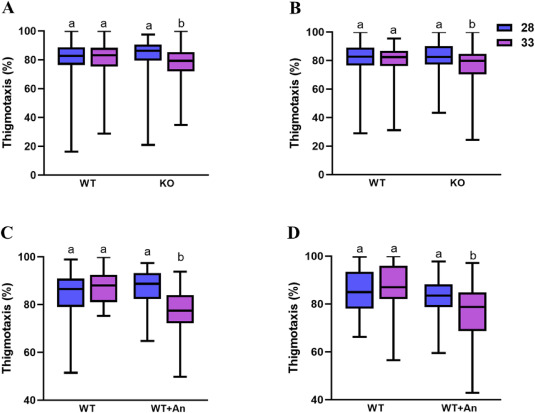Fig. 3 Loss of Crhr1 reduces thigmotaxis in zebrafish larvae: The top panel shows the percent thigmotaxis in the wildtype (WT) and crhr1−/− larvae (KO) in response to 28 °C (28) or 33 °C (33) at 15 (A, significant interaction but no main effect, P = 0.0002) or 60 min (B, only significant interaction, P = 0.00002). Boxes represent 1 SD above and below the mean of the data (n = 92–188, 4–8 trials with 24 larvae each), the line inside the box shows the median of the data, and the whiskers indicate the minimum and maximum of all the data; boxes with different letters are significantly different (nonparametric Two-way ANOVA). The bottom panel shows the percent thigmotaxis in the wildtype without (WT) and with antalarmin (WT + An) in response to 28 °C (28) or 33 °C (33) at 15 (C, only significant interaction, P = 0.0004) or 60 min (D, no main effect but significant interaction, P = 0.0003). Boxes represent 1 SD above and below the mean of the data (n = 24–72, 1–3 trials with 24 larvae each), the line inside the box shows the median of the data, and the whiskers indicate the minimum and maximum of all the data; boxes with different letters are significantly different (nonparametric Two-way ANOVA).
Reprinted from Molecular and Cellular Endocrinology, , Rajeswari, J.J., Gilbert, G.N.Y., Khalid, E., Vijayan, M.M., Brain monoamine changes modulate the corticotropin-releasing hormone receptor 1-mediated behavioural response to acute thermal stress in zebrafish larvae, 112494112494, Copyright (2025) with permission from Elsevier. Full text @ Mol. Cell. Endocrinol.

